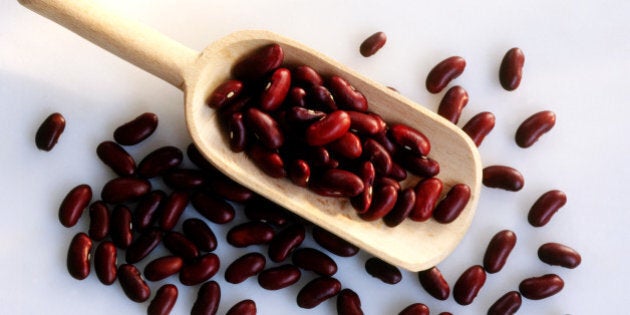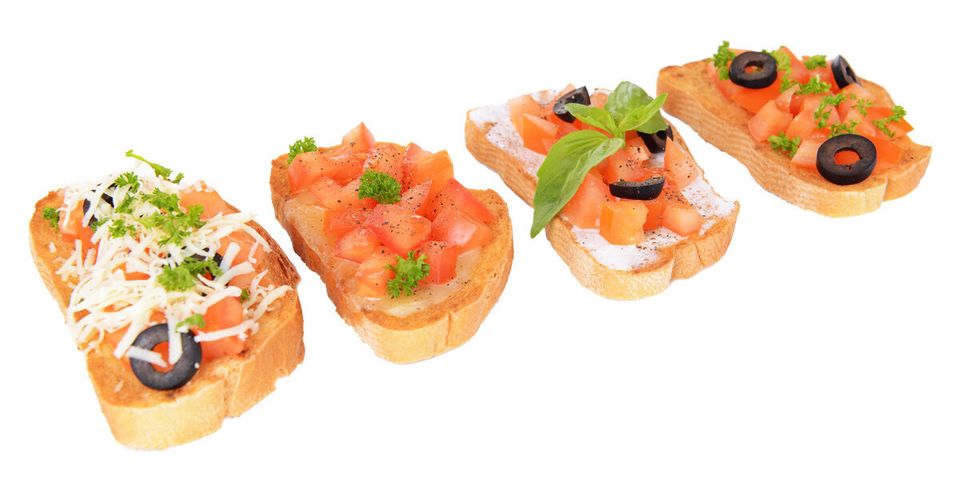

If you're worried about getting a handle on your high cholesterol level, or maintaining your current healthy levels, it's natural to think about which foods you should ban from your diet once and for all. Maybe you say to yourself, 'I've been eating too much cheese' or 'Why did I put so much butter on that toast?' While limiting certain foods — namely saturated fats in meat and full-fat dairy and trans fats in many baked goods — helps lower high cholesterol, what you do eat is also important in decreasing “bad” LDL cholesterol and raising “good” HDL cholesterol.
We combed the research and talked to top doctors and nutritionists for their list of cholesterol-slashing superfoods with science on their side. Here’s how to work more of them into your diet.
Diet Makes a Difference
For some people, diet tweaks are enough to lower cholesterol naturally without medication, while others will need drugs, or a combination of diet and medication, from the outset, according to Robert Eckel, MD, an endocrinologist and past president of the American Heart Association.
If you follow the National Cholesterol Education Program’s (NCEP) Therapeutic Lifestyle Changes (TLC) diet — which entails reducing saturated fat and dietary cholesterol, losing weight, and eating more soluble fiber — you can slash your LDL cholesterol by as much as 20 to 30 per cent, an effect comparable to that of cholesterol-lowering drugs.
In addition to cutting out cholesterol-raising foods, make sure you eat more of the following foods as part of your cholesterol-lowering plan.
Oats And Barley
These whole grains are among the best sources of soluble fibre, which blocks your body's ability to absorb cholesterol and “is your best friend for lowering LDL cholesterol,” says American Dietetic Association spokesperson Ximena Jimenez, MS, RD.
The soluble fibre that oats and barley contain — called beta-glucan — is particularly powerful. Eating oats with at least 3 grams of soluble fiber every day, for example, can lower LDL and total cholesterol by 5 to 10 per cent.
Try this: Eat oatmeal for breakfast and sprinkle oat bran into yogurt. Use cooked barley, a versatile, nutty-tasting grain, as you would rice — in soups, in salads, or as a side mixed with veggies.
The NCEP recommends consuming at least 5 to 10 grams of soluble fiber daily as part of the TLC diet, but 10 to 25 grams daily is preferable. Introduce fiber gradually and drink lots of water.
Beans And Other Legumes
Beans, peas, lentils, and peanuts are also wonderful soluble fibre sources: Every half-cup of cooked lima beans provides 3.5 grams, for example. One study in The Journal of Nutrition found that consuming a half cup of cooked dried pinto beans (2 grams of soluble fibre) daily for 12 weeks decreased LDL cholesterol by about 7 per cent.
Try this: Make rice and beans or bean-based soups. Toss beans, lentils, or peas into salads, or swap them in for meat in pasta dishes, suggests Jimenez. The TLC diet recommends three to five half-cup servings daily of vegetables, dry beans, or legumes.
Green Tea
Fire up your water kettle, because according to a new meta-analysis of 14 studies, green tea significantly reduced total and LDL cholesterol levels (by 7.20 mg/dL and 2.19 mg/dL, respectively). In some studies participants drank tea; in others, they took green tea supplements.
Try this: Although in some of the studies participants consumed the equivalent of 18 cups of green tea daily, experts don’t recommend that everyone start binging on green tea. More research is needed to know how much green tea to drink to improve cholesterol levels. Jimenez suggests sipping one to two 8-ounce cups daily. Also, keep in mind that most green tea contains caffeine (there are decaf versions), so you don’t want to overdo it, especially too close to bedtime.
Oils
While butter and other solid fats raise cholesterol, the unsaturated fats in oils help lower it. Polyunsaturated fats, found primarily in corn, safflower, sesame, soybean, and sunflower oil, slash LDL cholesterol. Monounsaturated fats, found mainly in olive, avocado, and canola oil, not only lower LDL, but may also raise HDL.
Try this: Cook with oils instead of butter, mix them with vinegar for salad dressing, or drizzle them along with herbs and spices on vegetables before roasting. Moderation is key, since oil is high in fat and calories. Stick to about 1 teaspoon with each meal, advises American Dietetic Association spokesperson Toby Smithson, RD.
Nuts
Nuts are another good source of monounsaturated fats. Eating 1 ounce of any kind of nuts daily for one month may lower LDL cholesterol by 8 to 20 per cent.
Try this: Nosh on an ounce a day — the equivalent of 23 almonds, 35 peanuts, 14 English walnut halves, 49 pistachios, or 2 tablespoons of peanut butter. Or add chopped nuts to salads, pasta, or yogurt. Nuts do have a lot of calories, so don’t eat them by the fistful.
Plant Sterol- Or Stanol-Fortified Foods
These plant compounds are found naturally in small amounts in certain fruits and vegetables, oils, nuts, seeds, and grains — and in higher amounts in certain fortified foods. They help prevent cholesterol from being absorbed, which can lower LDL without negatively impacting HDL cholesterol. Eating 2 grams a day can help lower high levels of LDL by 5 to 15 per cent.
Try this: You’ll need to eat fortified foods to really reap the heart-healthy benefits of sterols and stanols. Drink a cup of sterol-fortified orange juice, which provides 1 gram. Snack on a 3-ounce fortified yogurt, which has 2 grams. Smear a tablespoon of fortified, trans fat-free margarine, which has 1 gram, on your whole-grain toast for breakfast.
Soy
Soy — high in fibre, low in saturated fat, and cholesterol free — is the only complete plant-based protein, which means it’s an equal swap for animal sources like meat and dairy. A study published in 2010 in The Journal of Nutrition found that eating soy daily — and adding it to your diet to replace foods high in saturated fat — can help lower LDL cholesterol by nearly 8 to 10 per cent.
Try this: Nosh on edamame as a snack or add them to salads, drink soy milk, and use tofu in smoothies or as a replacement for meat in salads and stir-fries. Soy counts toward the daily three to five half-cup servings of vegetables, dry beans, or legumes that the TLC diet recommends.
Psyllium
Getting 10 to 12 grams of blond psyllium (the kind of fiber in supplements like Metamucil) per day can decrease LDL cholesterol by 5 to 10 per cent, according to the Natural Medicines Comprehensive Database. You mix psyllium powder into water and drink it as a beverage.
Try this: Consult your doctor before taking blond psyllium, since it could interfere with the absorption of certain medications. Then start with 3 grams of psyllium (widely available in health food stores and drugstores), and gradually increase the amount until you’re taking 10 to 12 grams daily, says Jimenez. “It’s important to not take psyllium in large doses, since it’s a laxative, it may cause potassium depletion, and may decrease absorption of fat-soluble vitamins A, D, K, and E,” she notes.
And make sure you get enough fluids — if you don’t, psyllium can cause constipation, and possibly even obstruct your bowel or esophagus. Follow package directions to make sure you drink enough.
Red Wine And Grape Juice
Alcohol can raise levels of good HDL cholesterol by as much as 5 to 15 per cent, research shows — and red wine is particularly beneficial because its polyphenol antioxidants may also lower LDL levels. If you’re not into vino, grape juice can provide some of the same heart-healthy benefits.
Try this: Stick to one 5-ounce glass of wine a day for women and two for men. For grape juice, Smithson suggests 8 ounces per day of purple grape juice for women and 16 ounces a day for men — pick 100 per cent fruit juice, not the sugar-added varieties. You can also snack on purple or red grapes, which contain the same antioxidants with the added benefit of fiber, notes Smithson.
Cocoa
In good news for chocoholics, a meta-analysis in the American Journal of Clinical Nutrition found that cocoa consumption lowered LDL cholesterol by more than 5 mg/dL in people at risk of heart disease. Most studies lasted about one month and looked at the effects of dark chocolate and cocoa powder. But the study authors caution that more research is needed to know whether the effects last or how much to eat to achieve results.
Try this: Most chocolate products also contain a lot of sugar and saturated fat in addition to the cocoa’s heart-healthy antioxidants, so don’t mistake them for health foods. When you’re craving a treat, nibble on a small piece or two of dark chocolate (at least 60 per cent cocoa), which has more antioxidants than milk chocolate, or make chocolate milk or hot cocoa with 2 tablespoons of natural cocoa powder.
Tomatoes
Known for their cancer-fighting prowess, tomatoes may also help reduce cholesterol. A 2011 meta-analysis of studies published in the journal Maturitas revealed that consuming 25 milligrams of lycopene (the antioxidant that gives tomatoes their red pigment) daily can reduce LDL by about 10 per cent. But since the research is so new, don’t expect your cardiologist to prescribe spoonfuls of tomato paste just yet.
Try this: Drink tomato juice, add tomatoes to salads and sandwiches, and use tomato sauce on pasta and to top side dishes of veggies. To get the amount of lycopene used in the study, you’d need to drink a pint of tomato juice or cook with 3.5 tablespoons of tomato paste each day. Cooking or eating tomatoes with a little oil helps your body absorb more lycopene.
Fruits And Vegetables
In addition to lycopene-packed tomatoes, produce high in soluble fiber should also be part of any cholesterol-lowering diet.
Try this: The best produce sources of soluble fiber include Brussels sprouts (3 grams per half cup); medium pears, oranges, and grapefruits (2 grams each); and dried plums (1.5 grams per 1/4 cup). Other good sources, which contain 1 gram per serving, include a medium plum, peach, nectarine, banana, apple, and a baked potato with skin.
The TLC diet recommends three to five servings of vegetables and two to four servings of fruit each day. To get that amount, follow this simple rule from the new U.S. MyPlate government guidelines: Fill half your plate at each meal with fruits and veggies.
